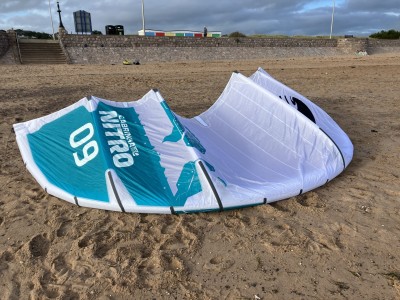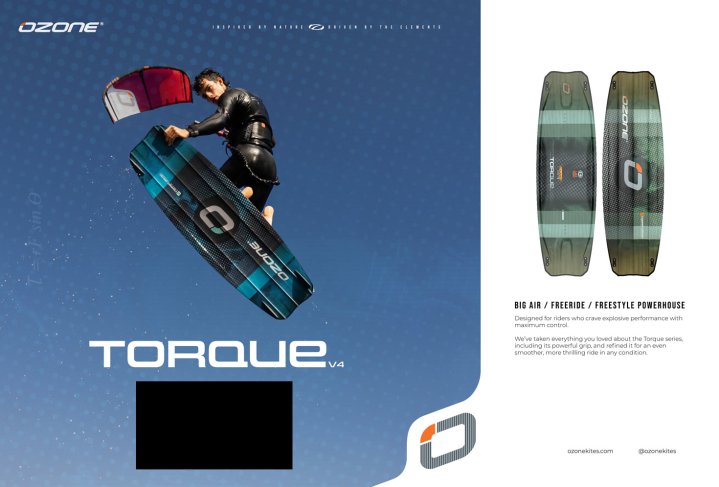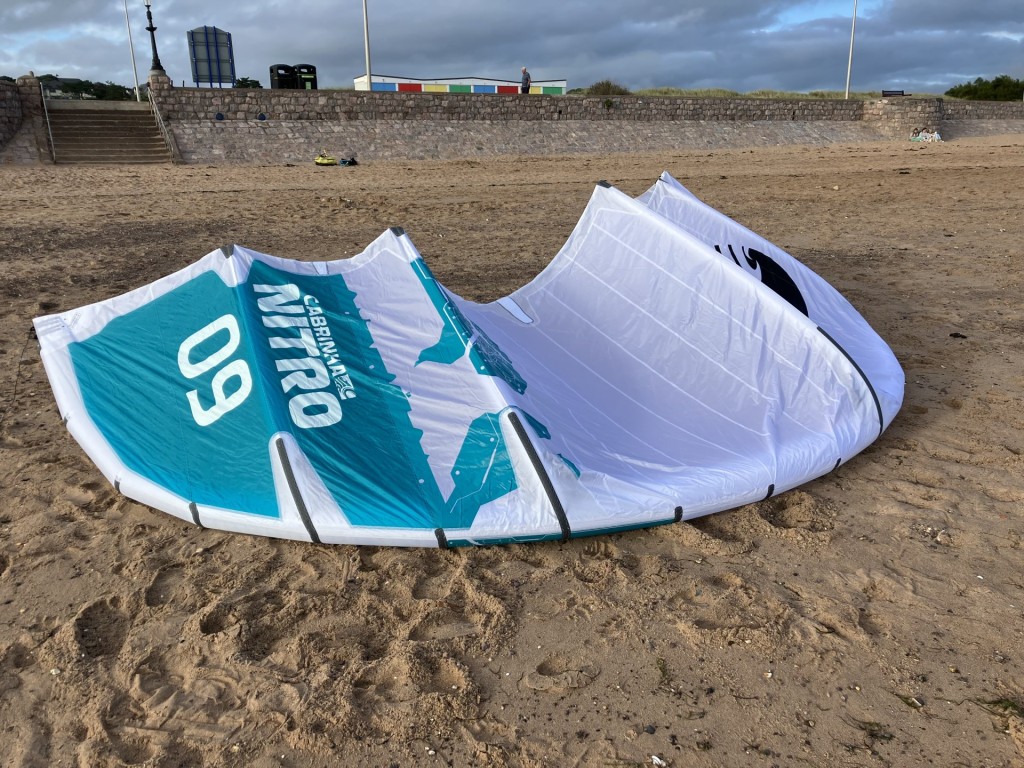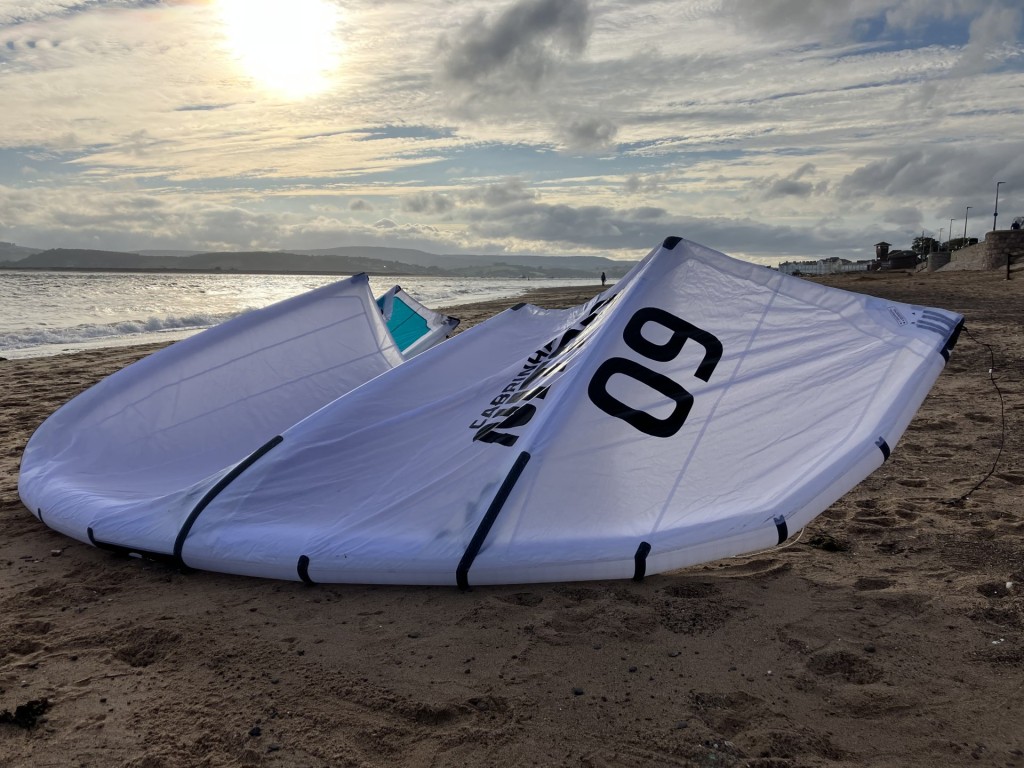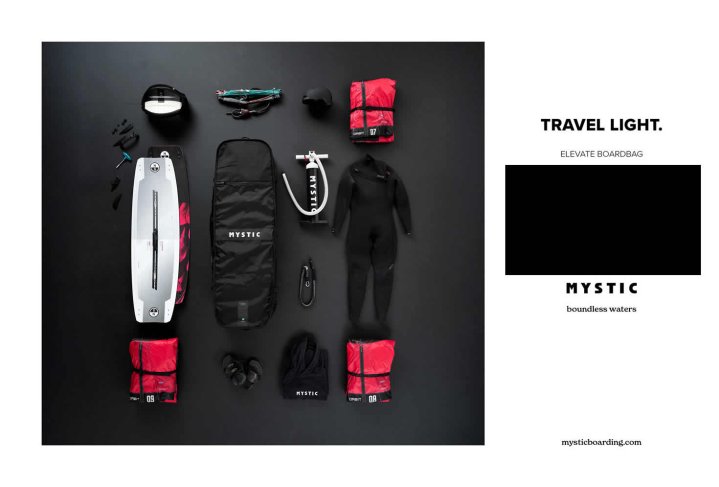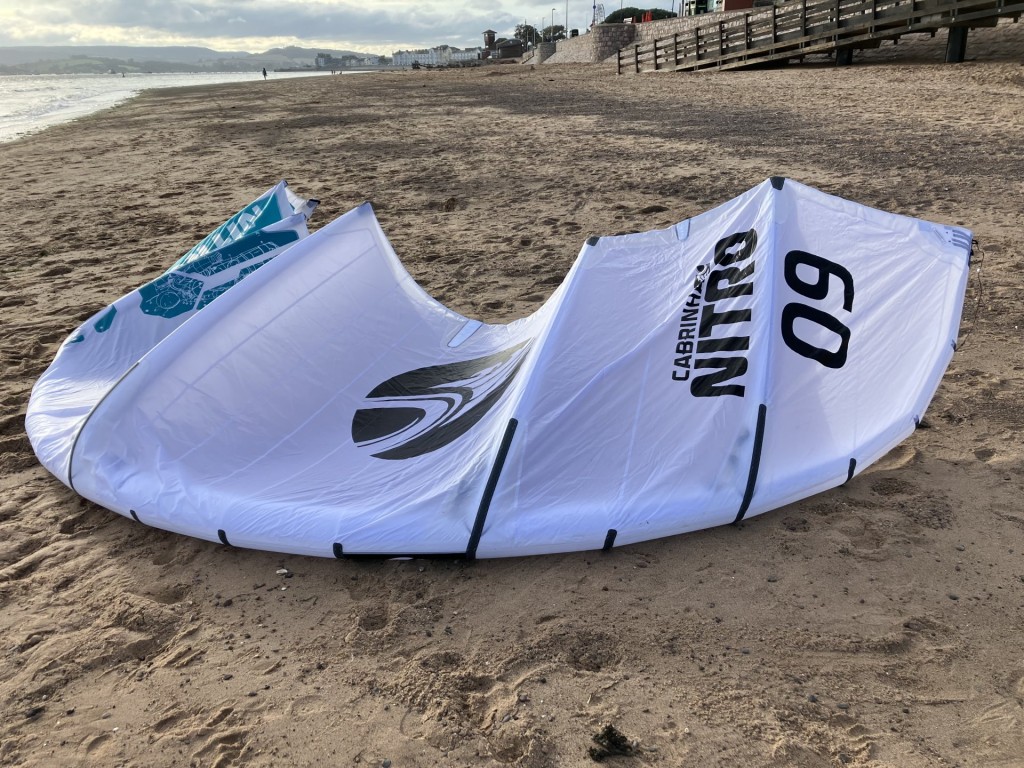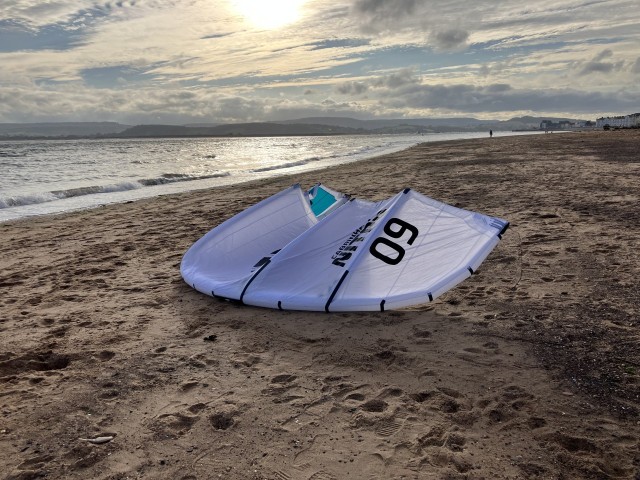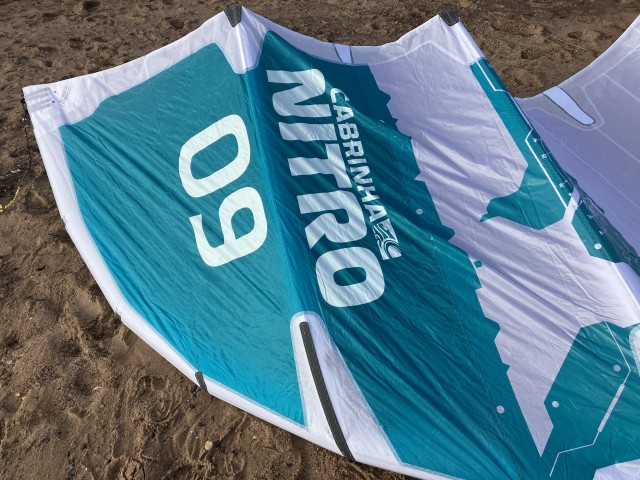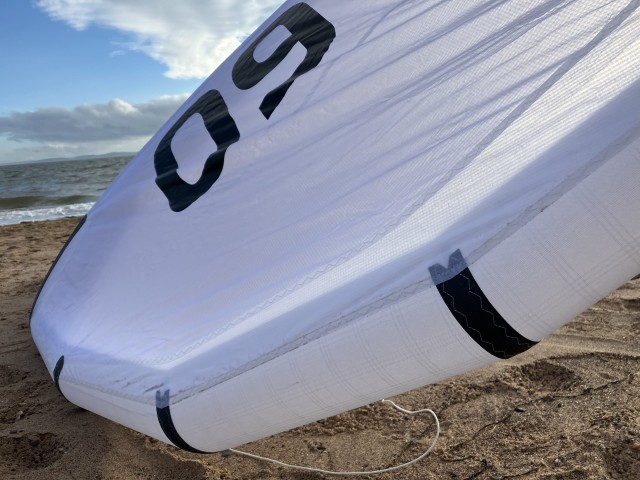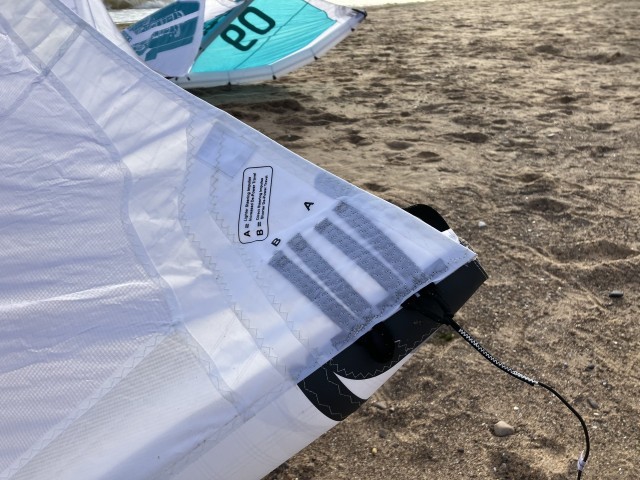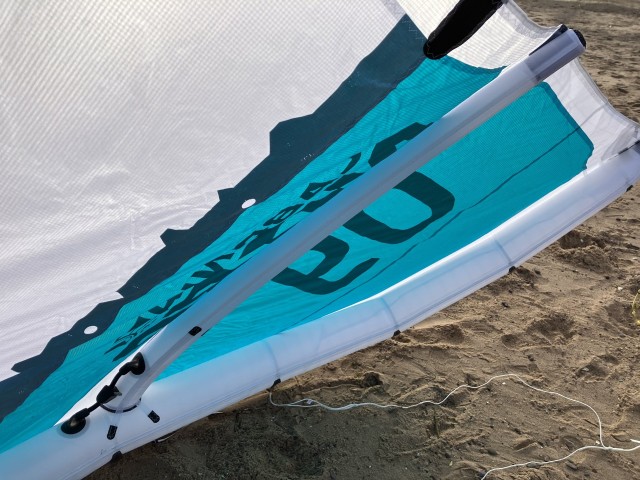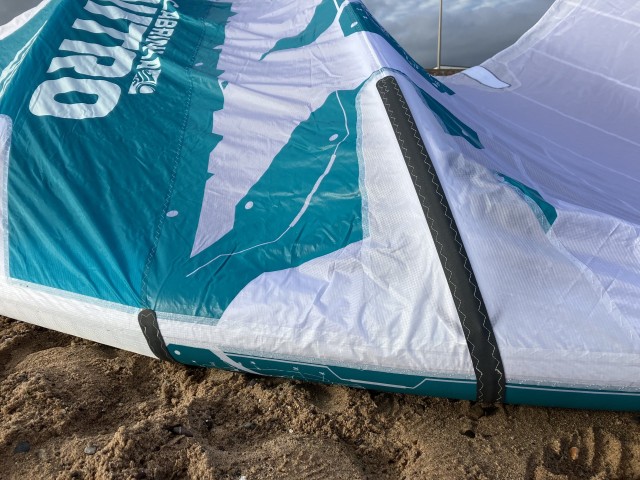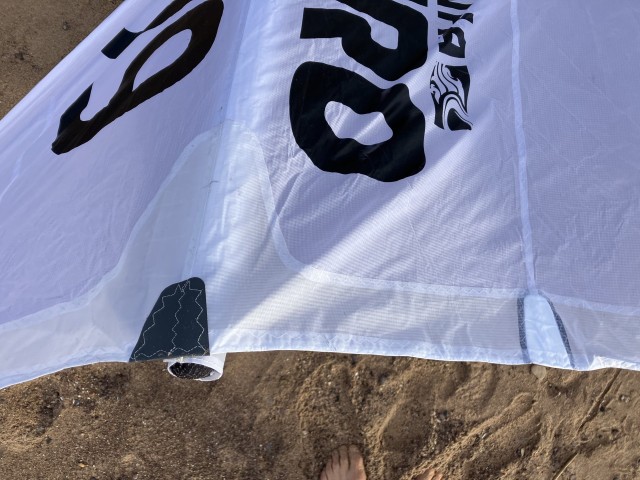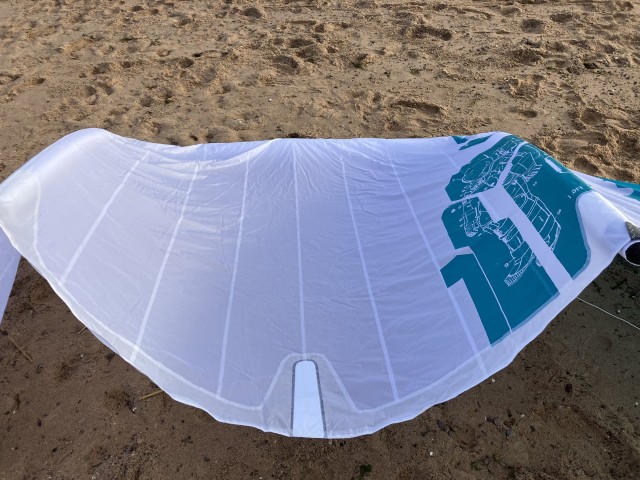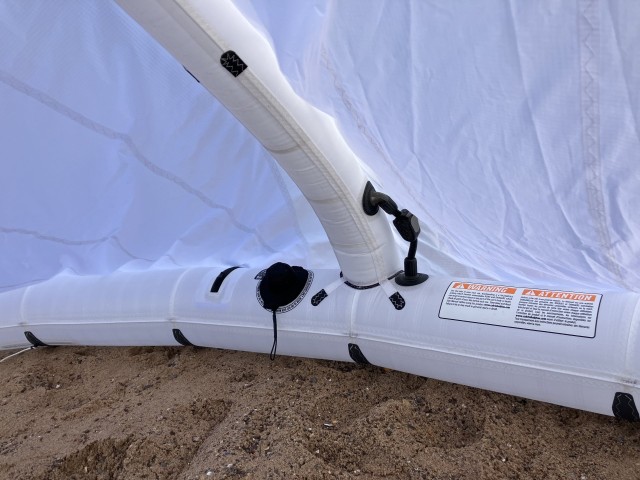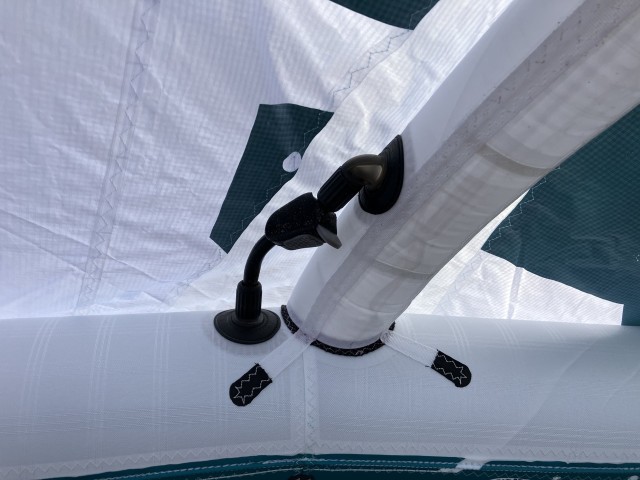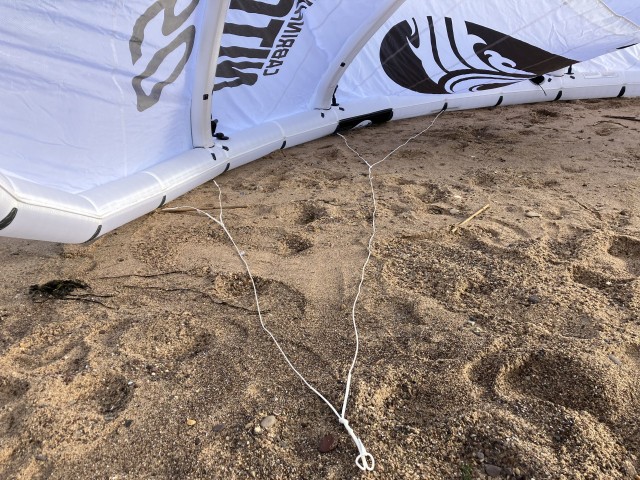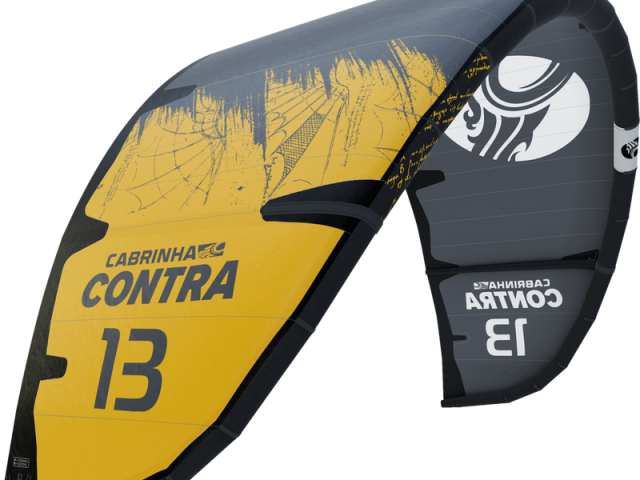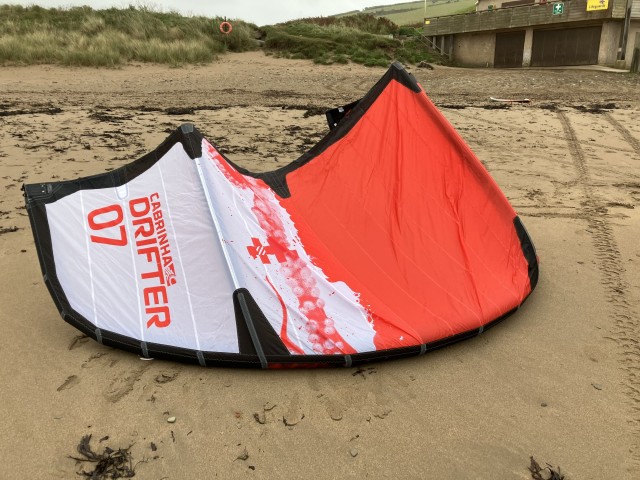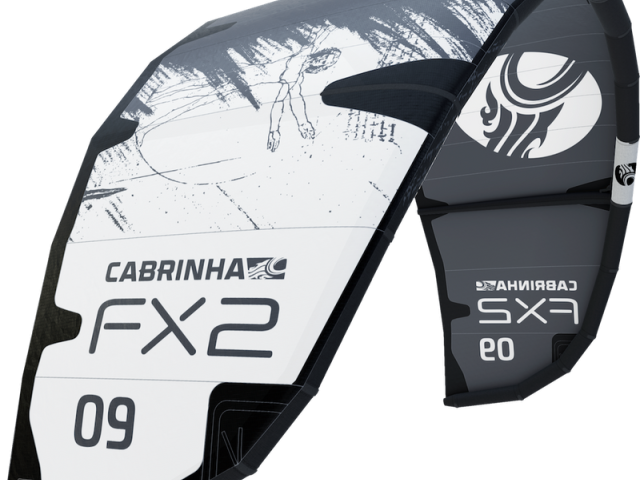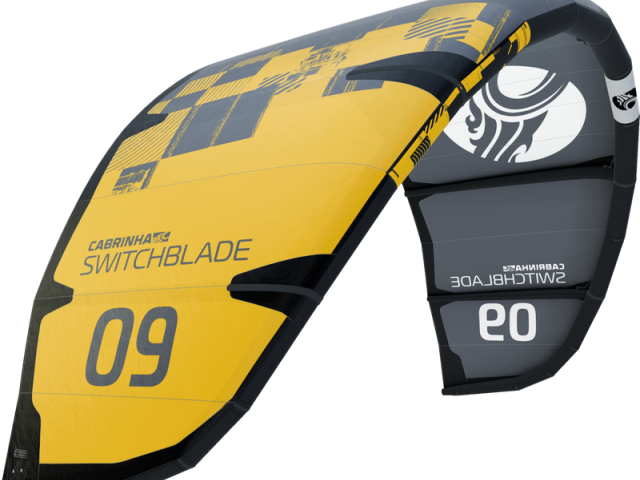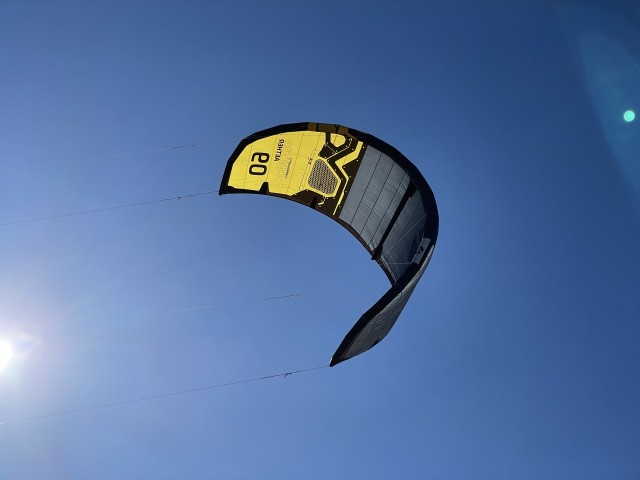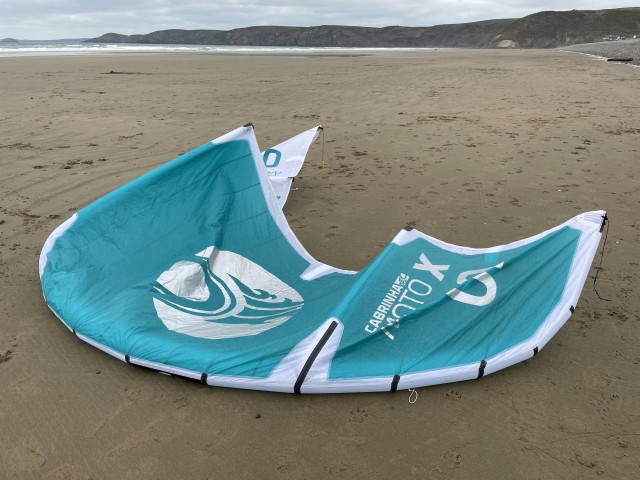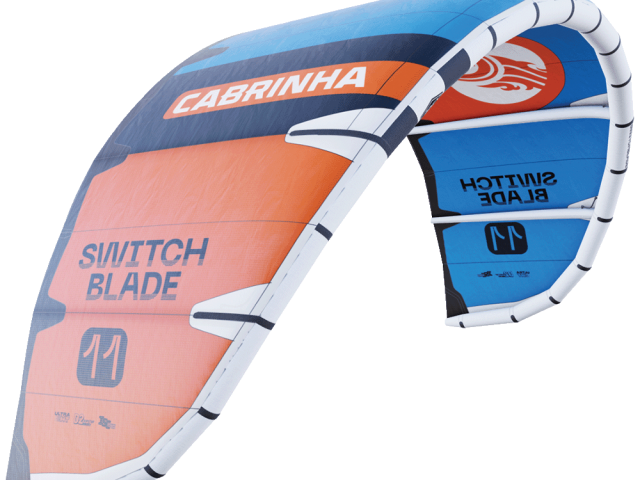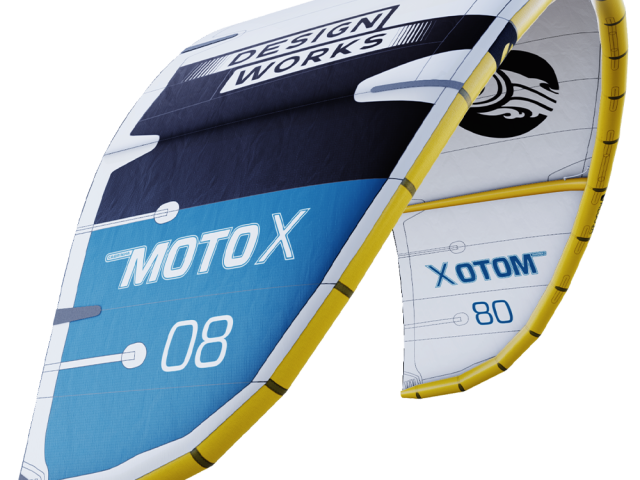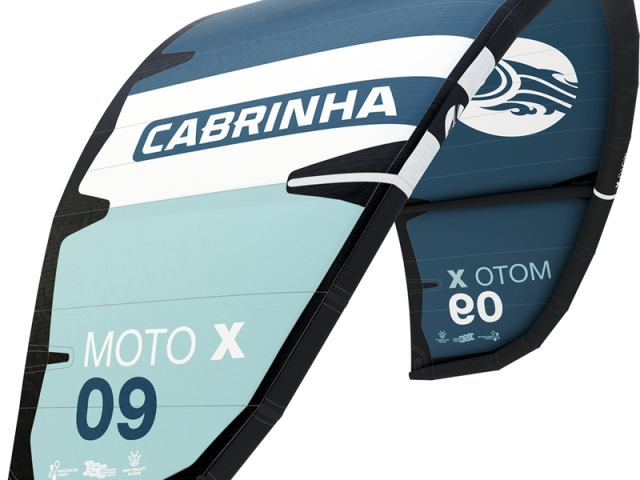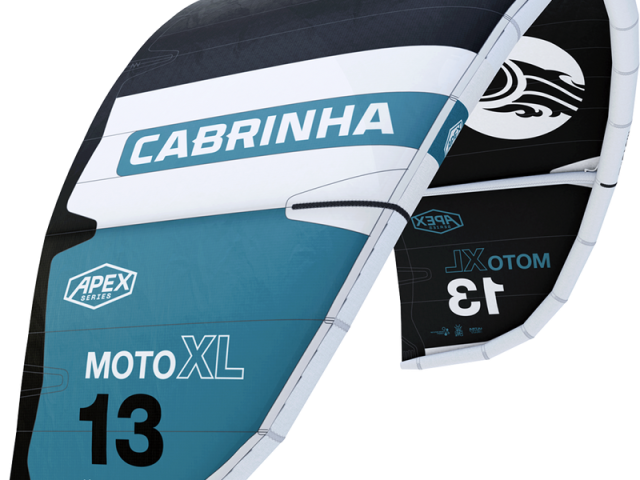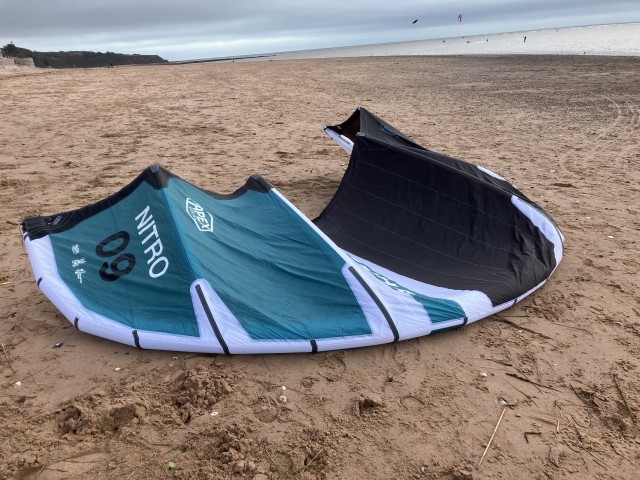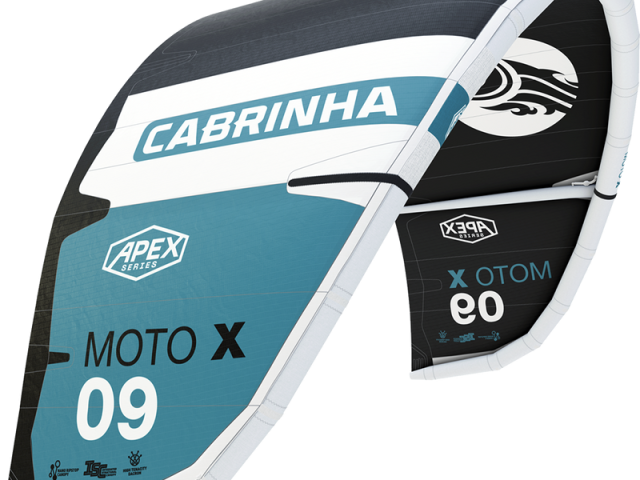The rebirth of the Nitro name and the release of this all-new kite seems very appropriately timed to me. It coincides with the return of Pat Goodman (kite designer) to Cabrinha, the release of the '03' collection, the signing of new dedicated big air riders to the team and the continuing growth of the discipline as a whole. Cabrinha has assigned the Nitro to both the 'performance freeride and big air' disciplines, but their marketing is pretty big air focused. So, is this kite just for a select few hard pushing riders, or does it deliver performance that will be appreciated by a wider audience?
At A Glance
As soon as you get the Nitro out of the bag, you are presented with construction materials that differ from the rest of the Cabrinha range. The Nitro is the only kite featuring the 'Apex Frame', which utilises Cabrinha's Ultra HT material. This is even lighter than their HTD Lite material and, in combination with 'ultralite bladders', results in the 9m weighing just a few grams over 3kg! This is very impressive given that the Nitro is a 5 strut platform. The Nitro has a relatively high aspect outline and a dynamic profile, which makes sense for a boosty big air machine.
The Nitro brings with it many new and smart construction features. Cabrinha has made a real effort to minimise weight but clearly understands that the Nitro may see some gnarly conditions and take a beating. So, what better way to save weight than weight-optimised durability reinforcements specifically? The black TPU scuff guards behind the struts and around the leading edge seams are very smart and complement the white colourway well. They look very aerodynamic with their low profile, and they're meant to be lighter than traditional scuff guard reinforcements too. There are no traditional hard rod insert trailing edge battens, as sewn-in EVA battens have been used to reduce canopy flutter as they're indestructible in comparison. The trailing edge also does not feature the 2 ply construction that we are used to seeing and has been replaced by a single, heavier-weight canopy material. This simplifies construction, adds equivalent reinforcement, and is lighter than the equivalent 2 ply. This trailing edge detail really stands out.
To complement the solid 5 strut design, the Nitro has a simple 4 point bridle system for the front lines and two options for the rear line attachment point. The outside attachment will deliver the lightest bar feel and fastest turning speed, and the inside attachment will increase the bar pressure and reduce the turning speed slightly. Luckily, I didn't have to worry about whether I'd need that additional turning speed to try a double loop, given that I had a 9m on review… good excuse!
Sizes: 6m, 7m, 8m, 9m, 10m, 12m
In The Air
Immediately noticeable when leaving the beach is how far forward the Nitro sits at the edge of the wind window. It drives even further forward in response to heavy front line loads, when digging in an edge, for example. This was comforting from the outset of my first session, as the wind was already strong and due to increase! This forward flying characteristic allows for easy management of the power of the kite as long as you have good board edge control. The side effect of this was that it rode upwind very quickly, especially when powered.
There was something about the name and marketing that led me into the session thinking that the Nitro would be an aggressive kite to ride at all times, but it has generous depower, predictable behaviour and plenty of feedback on its position, so it makes you feel in control. The bar pressure is light, the turning is fast, and there is no doubt that the kite is solid in the sky, even in strong and gusty winds.
It sounds cliche, but it took me by surprise when I did my first jump on the Nitro. The wind was already strong, but because of the light bar pressure, I hadn’t perceived myself as being quite as powered up on the 9m as I must have been based on the vertical height and hangtime of my first jumps. It was way beyond what I expected. Like all kites, the Nitro requires a well-timed edge and release technique to get the most height possible out of jumps, but thanks to the depower available and the way this kite generates power as it moves up to 12, it is easy to maintain your edge whilst you load up and release as you pull in the bar. When you are in the air, you notice the high-aspect design of the kite. Hangtime is a given with the Nitro. You don't need to move the kite around much, and you don't have to time your heliloops particularly well; it just gives plenty of float and makes it easy to ride away softly.
This hangtime also translates, if not even more noticeably, to fantastic 'catch' out of loops. The Nitro loops smoothly with a consistent forward pull through the loop, rather than an instantaneous yank, so you don't get much of a 'drop & catch' unless you make a mistake or send the kite real low. When you do send the kite low, it works hard to recover and provides a serious second lift to soften the landing.
Overall
The Nitro is lively, provides plenty of feedback to the rider, delivers easily accessible lift, and has heaps of hangtime. It gives you the confidence to send the kite hard and try new inverted rotations. However, being a 5 strut platform that flies forward in the window and a kite that isn't going to be as happy with little line tension during foiling gybes, for example, it isn't going to be as versatile as its more all around 'performance freeride' competitors. That said, most of them don't have the same big air performance! The Nitro is definitely a big air machine, but does it also deliver as a performance freeride kite? I'd say, if your idea of performance freeriding is blasting around hooked in on a twintip the majority of the time and wanting to jump as high as possible, yes. If you're strictly looking for a master of all disciplines, one kite quiver, and you swap your board type all the time, perhaps you're not as into big air as the Nitro deserves its riders to be.
Videos
This review was in Issue 101 of IKSURFMAG.
For more information visit CabrinhaRelated
By Liam Proctor


